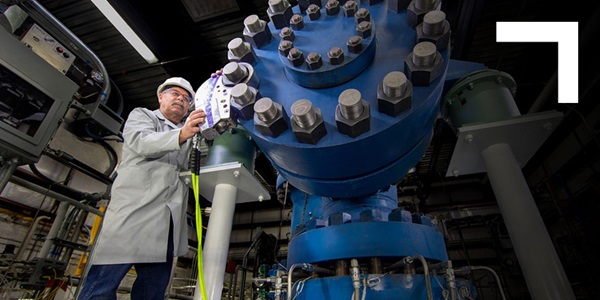Hitting a Bullet with a Bullet

The rules of missile defense have changed.
Since the early 2000s, the U.S. Department of Defense's (DoD's) Missile Defense Agency (MDA) has developed, demonstrated and fielded the Ground-based Midcourse Defense (GMD), an anti-ballistic missile system designed to detect and intercept incoming ballistic warheads. Once launched, the trajectory of these unpowered warheads is largely defined by the Earth's gravity, making it possible for GMD to accurately track the threats and ultimately, "hit a bullet with a bullet."
Flavors of Danger
"In the early 2010s, our government noted that near peer adversaries had started developing hypersonic weapons," said Tyler St. Onge, Director, Business Development, Northrop Grumman. "These new weapons featured maneuvering, booster-launched warheads traveling at speeds in excess of Mach 5. That makes them different and more dangerous than the ballistic missile threats that MDA has been preparing for all these years."
Hypersonic weapons come in two categories:
- Hypersonic cruise missiles, which are powered by high-performance, air-breathing engines known as scramjets
- Hypersonic boost-glide weapons, which comprise a maneuverable glide vehicle launched on a ballistic missile or rocket booster
Both types of weapons are notionally preprogrammed to fly to a specified target.
"When the enemy launches a booster stack, it's difficult to know if that warhead is going to follow a ballistic path or a hypersonic path," said Tyler.
With a traditional intercontinental ballistic missile, he explained, the warhead separates from its booster, then continues on a parabolic, gravity-driven trajectory to its target. By contrast, a hypersonic weapon separates from its booster after the peak of its trajectory, accelerates toward the Earth using gravity, then performs a pitch maneuver to begin a flatter trajectory called the glide phase.

Intercepting the Challenge
Tyler explained that, during the glide phase, hypersonic weapons are traveling at blinding speeds and relatively low altitudes — typically 20 to 80 km — which makes them challenging for ground-based radar systems to track.
However, the really vexing problem with glide weapons is that "they can navigate around areas containing known missile defense sensors," Tyler said. "So, you may think you know where it's heading, but then suddenly it turns and heads unperturbed to a target 200 km away," he said.
Hypersonic glide weapons' speed and maneuverability also make it difficult for traditional ballistic interceptors to match their moves or keep up with them, added Tyler.
"We think we should actually be using a hypersonic [system] to take out a hypersonic weapon," he said. "MDA is calling this approach a glide phase interceptor. They believe that a hypersonic threat is at its most vulnerable during the glide phase of its flight."
Advanced Technology in Command and Control
But using advanced weapons technology to counter hypersonic systems is not just about building the right sensors or even producing the right interceptor, clarified Tyler.
"An effective counter-hypersonic defense is actually a complete system," he said. "It starts from knowing that a threat is going to launch and includes sensing it, ensuring that the interceptor is getting real-time updates on the threat's location and verifying that we have intercepted the most likely threat in a complex scene — and then if needed, getting the next one and the next one."
In other words, successful counter-hypersonic systems will rely heavily on effective command and control (C2) among MDA, military commanders and tri-service missile defense assets.
"MDA does not control all the assets that might be needed in a missile defense engagement, but they can tie them all together with the C2 piece," said Tyler. "They can help to create that common operating picture that will help determine who's got the best shot and, if that first shot misses, who's got the next shot and so on."
Focused on Collaboration for Success
Northrop Grumman has been developing the advanced weapons technology needed to meet the nation's national security objectives for many years and is producing the first hypersonic Glide Phase Interceptor (GPI), a first-of-its-kind countermeasure against hypersonic threats, in close partnership with MDA.
“GPI adds mission critical standoff to warfighters in scenarios where distance creates an advantage,” said Wendy Williams, vice president and general manager, launch and missile defense systems, Northrop Grumman. “Tailorable to a multitude of mission requirements, Northrop Grumman’s revolutionary solution is designed to perform in the evolving threat landscape.”


